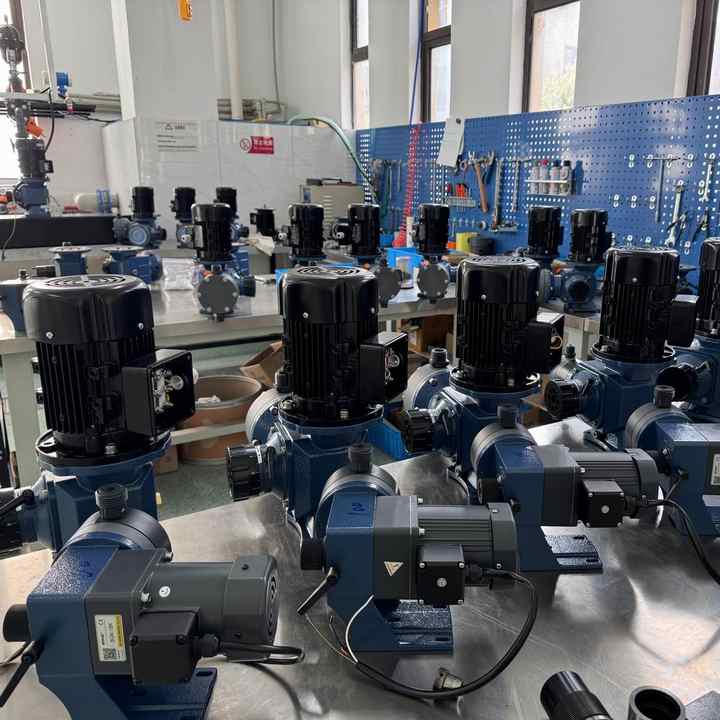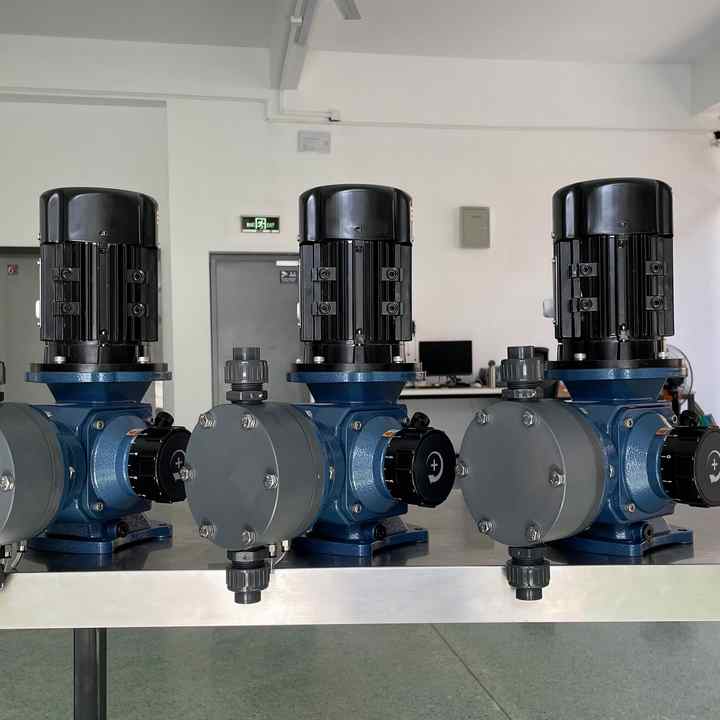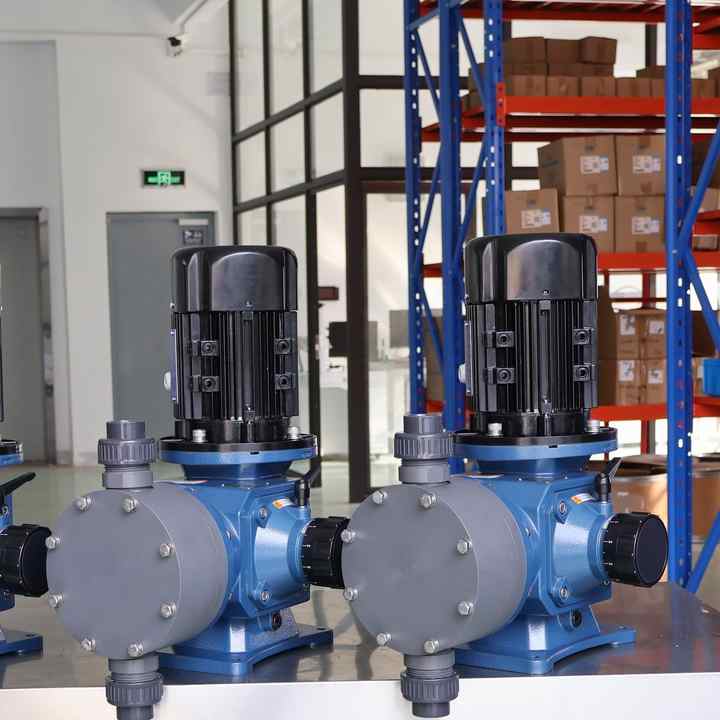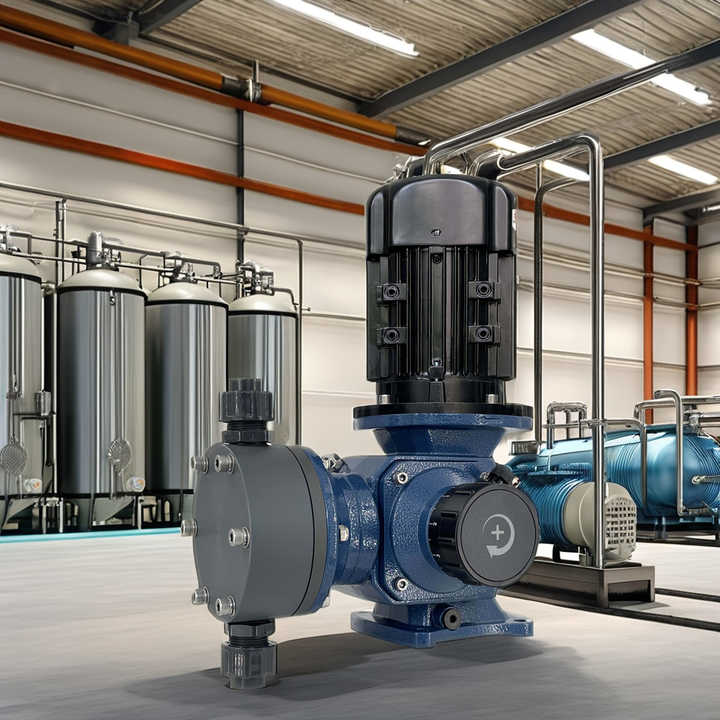Explore the Structure of Different Chemical Dosing Pumps
Structure of Chemical Dosing Pumps
- Structure of Diaphragm Chemical Dosing Pumps
- Structure of Piston Chemical Dosing Pumps
- Structure of Magnetic Chemical Dosing Pumps
- Structure of Hydraulic Chemical Dosing Pumps
- Structure of Electronic Chemical Dosing Pumps
Working Principle of Dosing Pumps
The structure of chemical dosing pumps is simple, but each type has a unique design, which is why they have different applications in various industries. Chemical dosing pumps are a type of small industrial pump that operates at high efficiency, capable of dosing liquid flow accurately. They are suitable for applications such as filling pumps, corrosive chemical pumps, chemical dosing, and wastewater treatment.
To achieve high dosing pump performance, users need to understand the structure and operation of each type of dosing pump.
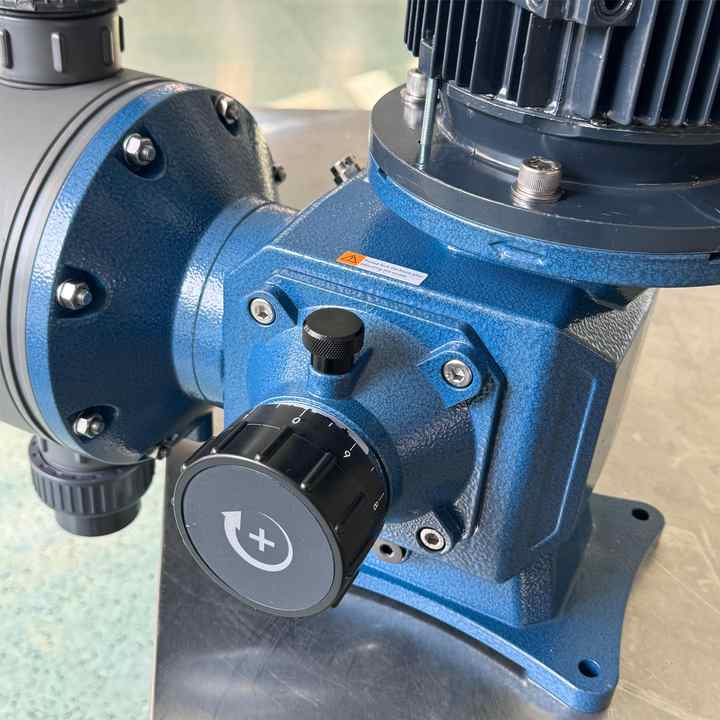
Structure of Chemical Dosing Pumps
Chemical dosing pumps are generally designed simply, but not all dosing pumps have the same structure. This is why customers should explore the structure of each type of dosing pump, making it easier and more effective to choose and use the right one.
The structure of chemical dosing pumps typically includes:
- Chemical container
- Check valve
- Pump body or pump chamber, including suction port, discharge port, liquid dosing parts, and other details such as diaphragm or piston, depending on the type of dosing pump
- Connecting pipes
- Spray system
- Control system
Let’s dive into the specific structure of different types of chemical dosing pumps.
1. Structure of Diaphragm Chemical Dosing Pumps
Diaphragm dosing pumps work based on the back-and-forth movement of diaphragms to transfer liquids. The advantages of diaphragm dosing pumps include durability, low risk of malfunction, accurate dosing, adjustable flow rates, and no leakage during operation.
Special applications of diaphragm dosing pumps include pumping chemicals for boilers, chlorine disinfection, food additives, physical and chemical applications, water treatment, wastewater treatment, sludge pumping, and more.
The structure of diaphragm dosing pumps is similar to that of standard diaphragm pumps, but with additional flow control features, which is why they are referred to as diaphragm dosing pumps.
The structure of diaphragm dosing pumps includes:
- Diaphragm
- Pump body and chamber
- Inlet and outlet
- Air supply system
- Safety valve
- Pump shaft
- Flow control system
- Valves, balls, and bases
With this structure, diaphragm dosing pumps are capable of handling various chemicals, liquids, hazardous substances, corrosive liquids, and high-temperature fluids.
The key difference between diaphragm pumps and diaphragm dosing pumps is that diaphragm pumps use compressed air for operation, while diaphragm dosing pumps use electric motors.
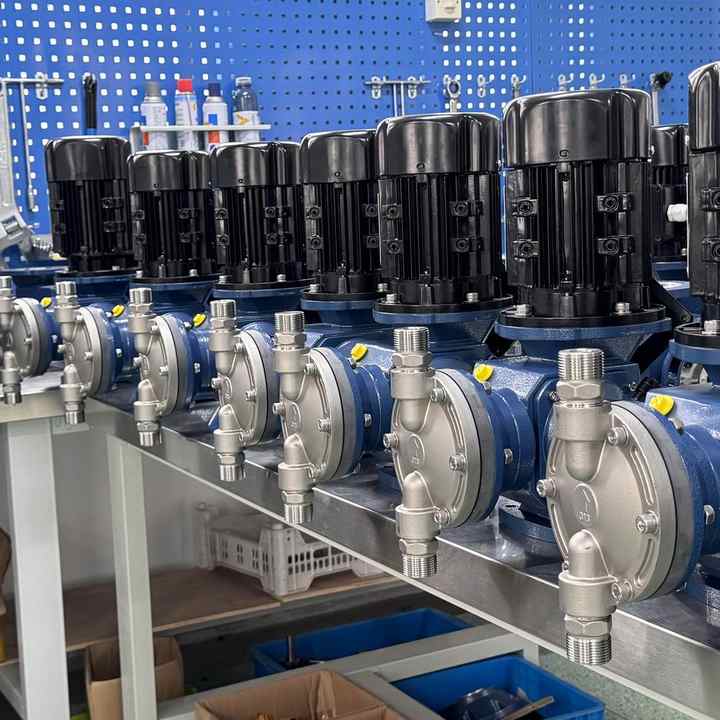
2. Structure of Piston Chemical Dosing Pumps
Piston dosing pumps feature a cylinder and pump chamber design, where the piston moves within the cylinder to alter the pump’s volume and transport liquid accordingly. The advantages of piston dosing pumps include strong performance, high power, stability, and durability. They are ideal for systems requiring high pressure and non-abrasive fluids.
Piston dosing pumps are a traditional, highly durable type with many applications. The structure includes:
- Piston
- Pump body/chamber
- Inlet and outlet
- Pump shaft
- Flow control system
Piston dosing pumps are efficient in handling various types of liquids, including solvents, solutions, and fuels.
3. Structure of Magnetic Chemical Dosing Pumps
Magnetic dosing pumps are the most unique in the dosing pump family. Unlike others, these pumps do not use shafts, diaphragms, or pistons. Instead, they operate based on the magnetic field, which creates suction and pressure to move the liquid. When the pump is operating, energy is transmitted through magnets.
The simple structure of magnetic dosing pumps includes:
- Pump body and chamber
- Inlet and outlet
- Flow control system (and if it’s an automatic system, a flow sensor)
4. Structure of Hydraulic Chemical Dosing Pumps
Hydraulic dosing pumps combine the best features of piston and diaphragm dosing pumps. These pumps effectively address the limitations of other dosing pumps by offering both powerful operation and complete sealing.
The pump chamber is divided into two parts by a diaphragm wall, with the main compartment functioning as the pumping chamber, and the auxiliary compartment filled with oil.
Applications of hydraulic dosing pumps include handling corrosive and abrasive liquids, toxic chemicals, and those containing suspended solids. They are also used in systems requiring high pressure.
Hydraulic dosing pumps offer high durability, long lifespan, minimal wear and tear, and low maintenance needs, with a simple structure that ensures leak-free operation.
The structure of hydraulic dosing pumps includes:
- A two-compartment design separated by a Teflon diaphragm
- Diaphragm
- Piston
- Auxiliary compartment between the diaphragm and piston
- Main compartment (the actual pump chamber) between the pump head and diaphragm
- Inlet and outlet components
- Flow control system
5. Structure of Electronic Chemical Dosing Pumps
Chemical dosing pumps can also be categorized based on their control mechanism, with two types: automatic control and manual control. Automatic dosing pumps, also called electronic dosing pumps, are equipped with sensors that can alert the central control system when the dosing amount is insufficient or exceeds the required level. The control system is an electronic device connected to the pump, such as a computer. Manual dosing pumps usually feature a flow control knob for easy adjustments.
Electronic dosing pumps are driven by electronic commands rather than compressed air, making them highly efficient and precise. These pumps are widely used for dosing chemicals in various industries, such as boilers, chlorine disinfection, food additives, semiconductor manufacturing, water treatment, and wastewater treatment.
Working Principle of Dosing Pumps
Chemical dosing pumps have high self-priming capability. These industrial pumps are convenient, efficient, and operate stably with easy usability. The operation of a chemical dosing pump involves several processes: self-priming, suction, discharge, and flow adjustment.
- Self-priming Process: The pump has a high self-priming ability, where the chemical is introduced into the pump chamber to fill the pump and ensure proper operation.
- Suction Process: After self-priming, the check valve opens, allowing chemicals to flow into the diaphragm or pump chamber. The suction process ends when the valve closes.
- Discharge Process: Following suction, the chemicals are transferred to the discharge port as the check valve opens and pushes them out.
- Flow Adjustment Process: This can be done manually or automatically, depending on the type of pump.
These four processes repeat until the pump stops.
This translation preserves the technical details of the original text while making it accessible for English-speaking readers.




